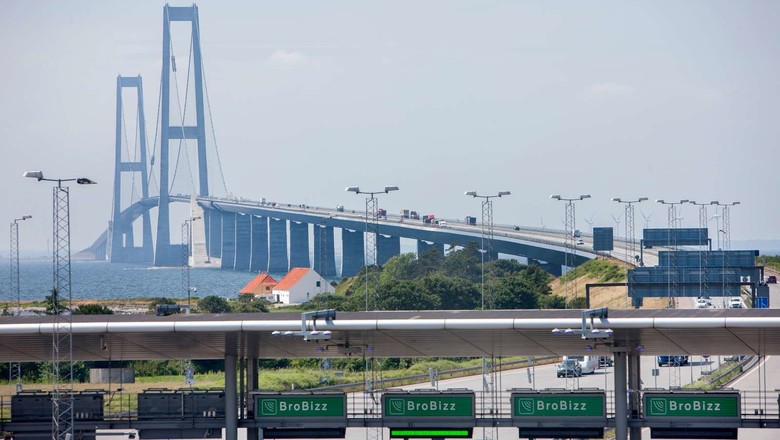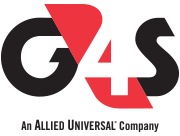
Denmark's Storebælt Link
Toll Road Security

The Storebælt Link in Denmark straddles the Storebælt strait - or Great Belt in English- a stretch of water which divides Denmark into two. Danes are extremely proud of their bridges, which are some of the greatest civil engineering wonders of the modern world.
When it first opened on 14 June 1998, the Storebælt link, which consists of a rail tunnel and road bridge, was the longest in the world at 18 kms.
G4S has worked with bridge owner and operator A/S Storebælt, a subsidiary of the Danish state-owned Sund & Bælt Holding A/S, since 2016, managing the toll operation. G4S had its contract renewed for a further three years in 2020, the first existing supplier to have done so on the project.
“This is testament to the commitment of the team to build a partnership of trust and respect with our customer,” said Julian Rudland, Director of Manned Service for G4S in Denmark. “We are completely focused on 100% cooperation, working hand-in-hand at all times with the Storebælt team to ensure that any operational issues are solved quickly and we provide a very high standard of service.”
We are completely focused on 100% coorperation, working hand-in-hand at all times with the Storebælt team to ensure that any operational issues are solved quickly and we provide a very high standard of service.

Traffic management team
By connecting its landmasses, which prior to the Storebælt Link’s existence were served by three ferry services, this feat of engineering has brought socio-economic prosperity to Denmark, valued at DKK 9 billion annually.
In traffic volume terms, on average 36,000 vehicles of all shapes and sizes use the dual carriageway passage everyday in the peak summer season, that’s about 30 vehicles a minute and is five times the volume that previously travelled by ferry.
G4S manages the toll operation of the bridge which connects Zealand to Funen. The toll plaza has 12 lanes on the westbound side and 10 lanes on the eastbound. These are all located in Zealand. Drivers from Zealand go through the plaza before crossing and those driving from Funen make their payment once across.
“When a driver has difficulty making a payment or if there is a technical issue, G4S team members led by our traffic manager, are on hand to talk remotely to the driver using a voice link,” said Brian Zimmerman, the department manager at the Great Belt Bridge for G4S. “We can also turn on the video monitoring in any particular lane so we can see the payment machine and help the person remotely, so there is no need to go to the lane in person.”

Digitalisation strategy
A G4S team of transport security professionals is based in the traffic control and monitoring room overlooking the toll plaza and the majority of their contact with drivers is remote. In both directions at Funen and Zealand a single security professional will sit in a booth in one of the lanes, providing additional support. Screens in the control room give the G4S traffic manager a complete overview of individual lanes and the condition of technical equipment.
The operation has changed substantially over the last three years, with the implementation of a new technology system, which G4S has worked with A/S Storebælt to ensure it works accurately. This is part of A/S Storebælt’s digitalisation strategy to improve the safety and security of drivers and employees alike. It has transformed the safety and physicality of the working conditions for G4S professionals, who prior to this system’s operation, could walk up to 12 kms in an 8-hour shift, helping drivers with their payments.
“This is a busy and complex operation and we are here to keep the traffic moving efficiently,” said Brian. “We’ve worked hard to deliver excellent customer service. Technological advances have brought great health and safety benefits to our employees by removing the need for them to physically be at the plaza. Previously this work was extremely strenuous and the improvements have increased the well being of G4S employees.”
Combining people and technology
The combination of skilled G4S employees and the technology provided by A/S Storebælt, means that up to 6,000 vehicles per hour can pass through the toll plaza. The record for a single hour is 5,600 vehicles.
Each lane has up to four video cameras configured to photograph a vehicle and its registration number. Using this video monitoring, the G4S traffic manager can help customers. In those lanes where cash is accepted, G4S technology is used to count the money and a G4S key card can access it and a cash in transit partner handles the money from there.
Drivers who use the Storebælt Link are able to pay at the plaza in a number of different ways; automatically via an onboard device, by cash, credit or debit card, number plate recognition or by mobile payment.
A small number of vehicles that want to cross the link may not be set up to make any of these automatic payments and in those instances, a member of the G4S team is on hand to help the driver make their payment, and sometimes get into the right lane.
When a vehicle exceeds a certain size, the G4S traffic manager organises an accompanying car to transport the vehicle over the bridge and ensures passage through a special transport area. These operations take place several times a day and are always arranged over the phone, even at short notice. Emergency vehicles are also notified to the traffic manager by telephone, which ensures a free lane for the vehicle.
Follow this link for more information about our products and services in Denmark
